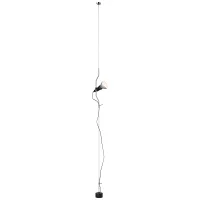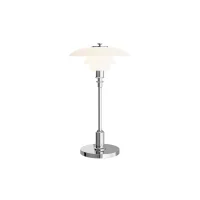
- On sale!
- -20%















Light plays a fundamental role in our daily lives, influencing not only vision but also our mood, emotions and productivity. In fact, lighting plays a crucial role in regulating the circadian rhythm, in the quality of sleep and in the perception of psychophysical well-being.
But why is light so important and how does its colour, intensity and temperature affect our mood?
Natural light is essential for our psychophysical balance. Exposure to sunlight stimulates the production of serotonin, a neurotransmitter that improves mood and helps fight anxiety and depression. Furthermore, light is essential for the production of vitamin D, essential for the well-being of bones and the immune system.
Artificial light, on the other hand, can influence our emotional state depending on its characteristics. In addition to this, inadequate or wrong lighting can lead to visual fatigue, difficulty concentrating and even sleep disturbances.
The amount of natural light varies greatly between different latitudes, influencing people's well-being and lifestyle.
In southern European countries, such as Spain and Portugal, the longer days and the high number of hours of sunshine favor a positive mood and a more active outdoor lifestyle. Here people tend to spend more time outside, enjoying the benefits of sunlight.
In contrast, in Nordic countries, such as Norway, Sweden or Iceland, sunlight is limited for much of the year, with long dark winters and very short days. This can lead to mood disorders such as seasonal depression (SAD) and affect productivity.
To counteract these effects, many people use full-spectrum lamps and advanced artificial lighting technologies to simulate natural light. However, adaptation to these different environments also influences the circadian rhythm: in Nordic countries, for example, prolonged exposure to light during summer can lead to difficulties in regulating sleep, while the lack of light in winter can cause increased drowsiness and fatigue.
The color temperature of light is measured in Kelvin (K) and varies between warm, neutral and cool light.
* Warm light (2700K-3500K): It has a yellow-orange tone and creates a welcoming and relaxing atmosphere. It is ideal for environments such as the bedroom or living room, where relaxation is essential.
* Neutral light (3500K-4500K): Approaches natural light and offers a balance between comfort and productivity. It is often used in work environments and common areas.
* Cold light (4500K-6500K): It has bluish tones and stimulates concentration and wakefulness. It is recommended for offices, studios and spaces where high attention is required.
Colored lights affect our mood in different ways:
* Blue: Relaxing and calming, but if too intense it can interfere with sleep.
* Green: Balancing and restful, excellent for relaxation and meditation.
* Red: Stimulating and passionate, but can be excessive in restful environments.
* Yellow: Energizing and welcoming, it promotes good mood and creativity.
Light regulates our biological clock, known as the circadian rhythm. In the morning, exposure to bright light (preferably natural) helps the body wake up and activate, promoting the production of cortisol, the energy hormone.
In the evening, however, a softer and warmer light favors the release of melatonin, the hormone that induces sleep. Excessive use of bright screens before sleeping can in fact alter this balance, reducing the quality of rest and for this reason it is advisable to reduce exposure to blue light at least an hour before bedtime.
The intensity and type of light directly influence our emotional state:
* Bright, cold light can make you more alert, but also increase stress.
* A soft, warm light helps create a sense of tranquility and comfort but less concentration.
* Natural lighting promotes the release of serotonin and dopamine, improving mood. Studies have shown that well-lit environments with natural light reduce the risk of seasonal depression (SAD), a disorder that affects many people in the winter months.
Lighting has a significant impact on concentration and work performance:
* Offices and study environments should have cool white light (4500K-6500K) to stimulate concentration.
* Creative spaces can benefit from warmer or dynamic lighting to encourage inspiration.
* Incorrect lighting (too low or too bright) can cause eye strain, headaches and decreased productivity. Light and visual health Visual strain is one of the main consequences of inadequate lighting. Light that is too dim forces the eyes to work too hard, while light that is too bright can cause glare and discomfort. It is therefore essential to choose uniform and well-distributed light, avoiding excessive shadows and reflections.
The ideal light intensity varies depending on the time of day and the activity carried out:
* Morning: Natural or cold light to stimulate wakefulness and productivity.
* Afternoon: Neutral light to maintain energy and concentration.
* Evening: Warm, soft light to promote relaxation and prepare for sleep.
Dynamic lighting, which changes according to the needs of the day, is the best solution for psychophysical well-being.
Read how to calculate the right amount of light in a room.
In conclusion, light is a fundamental element in our lives, with a significant impact on mood, emotions, productivity and health. Choosing the right lighting for every moment of the day and for every activity can significantly improve your quality of life.
Paying attention to the type of light, its intensity and color helps us live better, more relaxed and in harmony with our biological rhythm.
Find out more on our Diffusione Luce website!
Written by Alice Pruccoli
Share this content